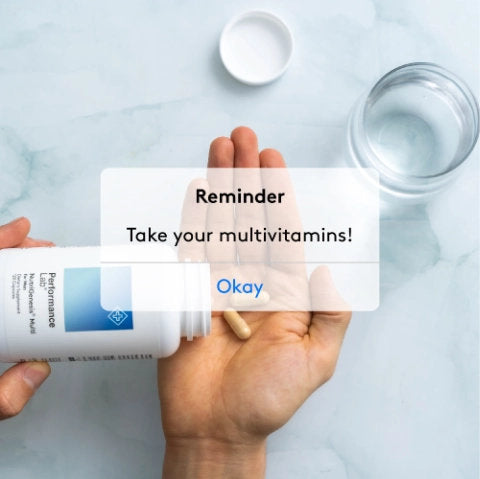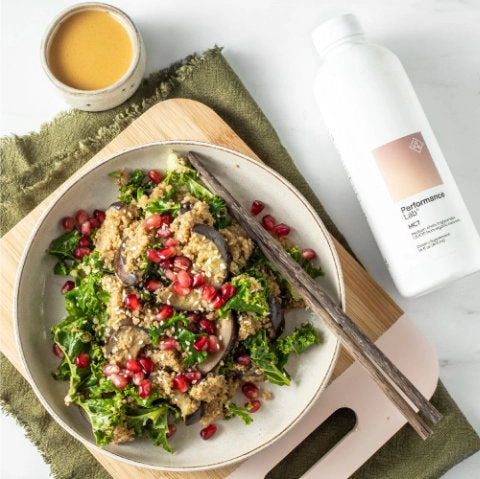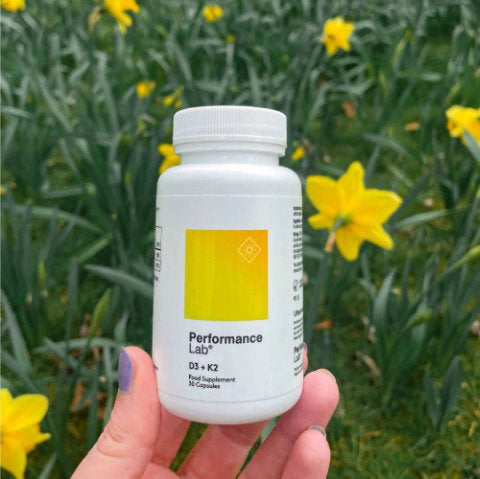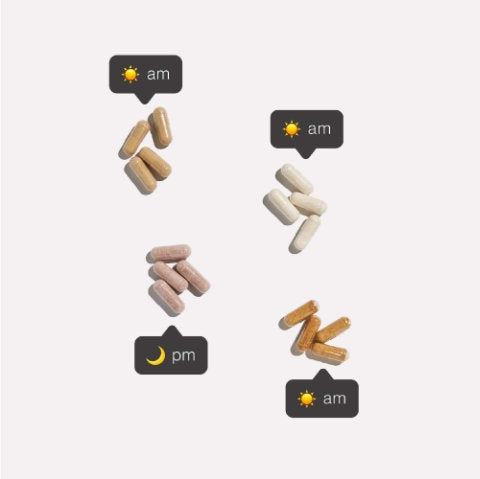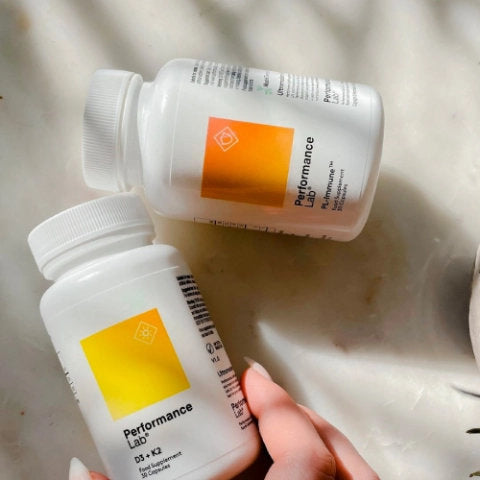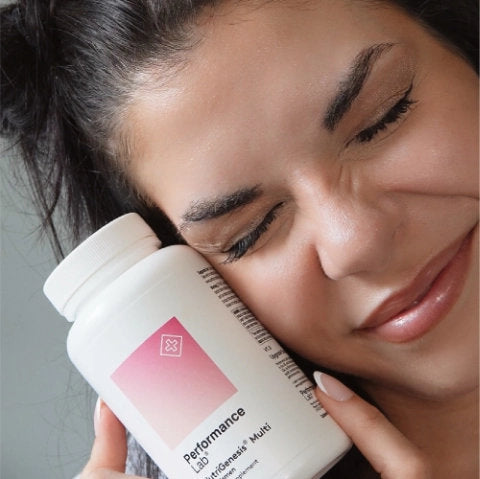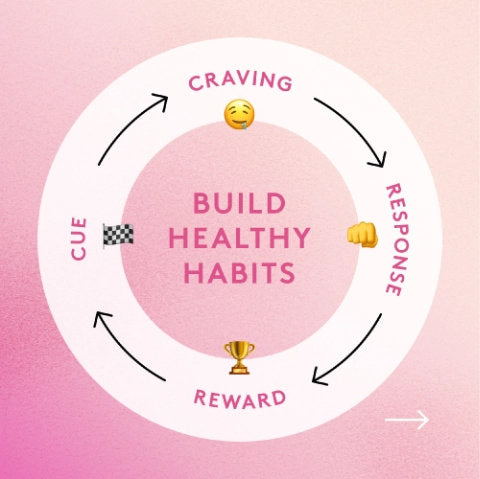If you're into fitness, chances are you've heard about HIIT. A form of training that incorporates high-intensity bursts with low-intensity periods of rest to maximize workout efficiency, improve cardiovascular fitness, and melt fat.
For anyone that's never done a HIIT workout, it's not for the faint of heart, but it gets results fast—but just how fast?
If you want to improve cardiovascular fitness and VO2 max, you may see results in as little as 6-8 weeks, and if you're looking for fat loss, it depends on how consistent you are with other lifestyle factors.
But in any case, HIIT works wonders to break through a workout plateau and get your metabolism firing.
If you want to determine how long it will take to see results with HIIT, you first need to understand how it works.
In this article, we'll break down the details of HIIT and how long you can expect before you see results.
Let's get started.
HIIT 101: The Basics
In case you're not familiar with HIIT, let's first cover the basics. HIIT, also known as high-intensity interval training, is a type of training designed to energy output using short bursts of intense exercise (80-100% HRmax) followed by short periods of low-intensity activity or complete rest [1, 2]. Essentially, you want to give it your all during work periods and recover during rest periods. When most people do cardio, they think about long-duration steady-state cardio—running on a treadmill, cycling, elliptical, and the like. While steady-state cardio does have its place and is beneficial for health, it doesn't have the same impact as high-intensity workouts.
Studies find that compared to weight training, running, and biking, 30 minutes of HIIT burned 25-30% more calories [3].
For example, you could perform sprints on a treadmill following 40 seconds on, 20 seconds off protocol.
So, for 40 seconds, you would run at maximum effort, then for 20 seconds, you would walk or completely rest until the next round. The length of your workout will depend on what you're doing and how intensely you're working.
But despite having plenty of benefits over other forms of exercise, we still classify HIIT as a form of cardio, which may not appeal to some people.
However, throw in a pair of dumbbells or a kettlebell, and you're adding a new level of work and results to your training.
3 Big Benefits Of HIIT Workouts
1. Increase cardiovascular fitness
Improving cardiovascular fitness is generally one of the main goals for anyone participating in cardio exercise. Several studies have shown that HIIT offers a time-efficient way to improve cardiovascular fitness, VO2 max, and anaerobic threshold.
Oxygen consumption refers to your muscles' ability to use oxygen. If you want to improve this, endurance training is usually the way. And while steady-state cardio does improve cardiovascular fitness, research finds that HIIT produces the same benefits in less time [4-6].
One study found that people who performed 20-minute HIIT sessions four times per week saw a 9% improvement in oxygen consumption in just five weeks [7].
The other group who performed 40-minutes of continuous cycling four times per week also saw a nearly identical improvement. Another study found that HIIT using a stationary bike improved oxygen consumption by a whopping 25% [8].
Although when compared to traditional cardio, the results are similar, it's time we take note of—120 minutes per week for conventional cardio, but just 60 minutes per week with HIIT.
If you're in a crunch for time and want big cardiovascular improvements, ramping up the intensity and cutting the time is to your advantage.
2. Improve your workout compliance
Do you ever find that doing the same workouts day in and day out is boring? Are you hitting a plateau and lacking the motivation to keep training? Throwing some HIIT workouts into your routine could spice things up.
HIIT workouts are not only effective for improving several markers of health, but they're incredibly time-efficient. If you don't have hours to work out, you can complete a HIIT workout in as little as 15 minutes—and you don't need equipment.
A 2012 study found that HIIT effectively improves workout compliance and cardiovascular health outcomes in less active people [9].
Researchers concluded that the flexibility of HIIT workouts—the ability to have participants exercise at high intensities (30 seconds to minutes) with longer recovery periods (1-5 minutes) increased workout compliance, making it an excellent option for both healthy and unhealthy populations.
It's quick, dirty, and gets the job done—and if you're looking for results without a significant time commitment, HIIT could be for you.
3. Fire up weight loss and fat burn
Most people, in some capacity, are looking for either weight loss or fat loss, and while strength training is a must for both, high-intensity exercise is some of the best training for melting fat. Some research suggests that compared to other forms of exercise, HIIT is substantially more effective for fat burn [10-12].
However, if weight loss is what you're after, there are no promises. Increasing the intensity of workouts seems to benefit fat loss, but it doesn't always drop the number on the scale. It's wholly possible to gain weight from gaining muscle.
Don't expect these from HIIT
While there are many benefits of HIIT workouts, it doesn't come without their drawbacks. Consider these first if you're considering adding HIIT to your training protocol.
1. HIIT isn't a shortcut to reaching your goals
When we hear about HIIT, some people are under the impression that increasing the intensity and decreasing the time is a quick way to get results—but it's not that simple.
While your workouts need to be intense, if you want results, you also have to consider your diet, sleep, stress, and other lifestyle habits that can contribute to your success.
The hard truth is that HIIT is simply a training method with great benefits, but it can also have detrimental effects when done in excess. HIIT is, no doubt, hard on the body, and you need to give yourself adequate rest between sessions.
As such, it's probably not something you'll want to do for every workout. If your body is still stressed, your results will be limited.
2. Increase muscle mass and strength
High-intensity cardio is great for burning calories and torching fat, but if you want to build muscle, you need to add resistance—dumbbells, kettlebells, resistance bands, etc. When compared to traditional resistance training protocol, HIIT isn't nearly as effective in increasing muscle hypertrophy [13].
How Long Until I See Results With HIIT? According to science…
If you're looking for serious results from your workouts, it's easy to expect things to happen fast—but they often don't.
In addition to your training program, there are other factors—diet, sleep, stress, etc.–you have to account for that play into results.
We'll talk about those later, but here is a rough guideline for when you can expect to see results with HIIT—assuming all other factors are on point.
After 2 weeks of HIIT
After just a few weeks of performing HIIT, research finds that it's effective in improving the oxidative capacity of skeletal muscle and endurance performance.
In one study, subjects did six HIIT sessions over two weeks of 4-7 bouts of “all-out” cycling lasting 30 seconds, separated by 4-minute rest periods, during which cycling was low intensity [14].
After doing HIIT three times per week for just two weeks, results showed improved time trial performance times by an average of almost 10%!
HIIT and low-intensity endurance exercise in another trial resulted in almost identical improvements in time trial performance, even though HIIT time requirements are substantially less [15].
So, while HIIT may not provide significantly greater benefits over low-intensity steady-state exercise, it's a much more time-efficient strategy for achieving adaptations in skeletal muscle and performance.
After 6 weeks of HIIT
After six weeks of hard work, you'd probably expect some pretty great results—and you may, especially where cardiovascular fitness is concerned.
Studies find that regular training can increase your VO2max by around 8% in roughly six weeks [16]. VO2max measures aerobic power and tells you how much oxygen your body can use at a maximal effort.
Other studies find that subjects following a Tabata protocol saw increases in VO2max by a whopping 15% after six weeks [17].
However, remember that Tabata can be more intense, generally following a 20-second on, 10-second off protocol. It's the kind of workout where if you can breathe and feel decent after, you haven't done it correctly.
After 3 months of HIIT
Once you've gotten used to the grind of HIIT for a few months, the results should start piling up. Maybe your cardio capacity has improved, the work doesn't seem so hard, and perhaps you've even noticed changes in body composition—it just takes dedication and consistency.
But after three months of HIIT, there are some pretty significant results. Studies find that HIIT performed three times per week for three months delivered many of the same benefits as traditional moderate-intensity exercise but in a fraction of the time.
In one study using 10 minutes of HIIT compared with moderate-intensity cycling, measures of cardiometabolic health were similar despite a 5-fold lower time commitment [18]. Results shows:
- 15-20% increase in VO2 peak in both groups
- Improved insulin sensitivity
- Increased muscle mitochondrial content
And what about fat loss?
A 2019 review published in the British Journal of Sports Medicine found that after about 30-35 workouts (about three months if you're training three times per week), participants following a HIIT protocol lost an average of 3.5 pounds (1.6 kilograms), compared to 2.5 pounds (1.1 kilograms) for those doing steady-state cardio [19].
Other Factors That Influence Results
While your workout itself is a significant factor in what kind of results you see, it's not the sole influencer.
You can be as consistent as you want with exercise, but if other lifestyle factors are out of whack, the results aren't going to show—or at least not stick.
If you want to maximize HIIT results, consider the other factors you need to pay attention to:
- Diet
- Sleep
- Stress levels
- Workout intensity
- Current fitness level
- Age
When vying for the best results from HIIT, you need to set realistic goals.
Final Thoughts
Although we love to think that starting a new workout program will bring immediate results, they don't happen overnight.
HIIT is a highly effective training style for eliciting improvements in cardiometabolic health and performance, but it takes a concerted and consistent effort to get the desired results.
And if you're struggling to complete your workouts and want an energy boost—but also a results booster—consider taking something like Pre Lab Pro®.
It's an all-natural pre-workout designed to take your workouts and results to the next level. Packed with the most advanced and scientifically-backed nutrients, Pre Lab Pro® delivers bigger and better workout power for out-of-this-world results.






